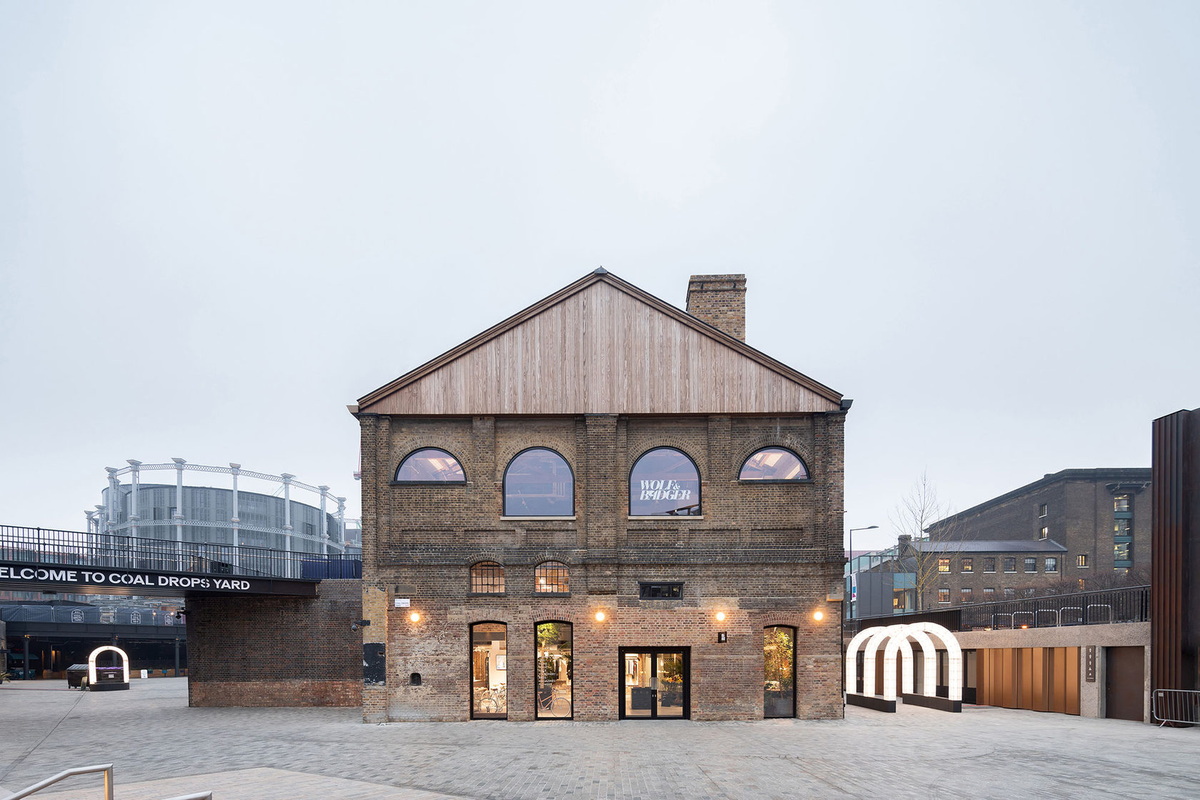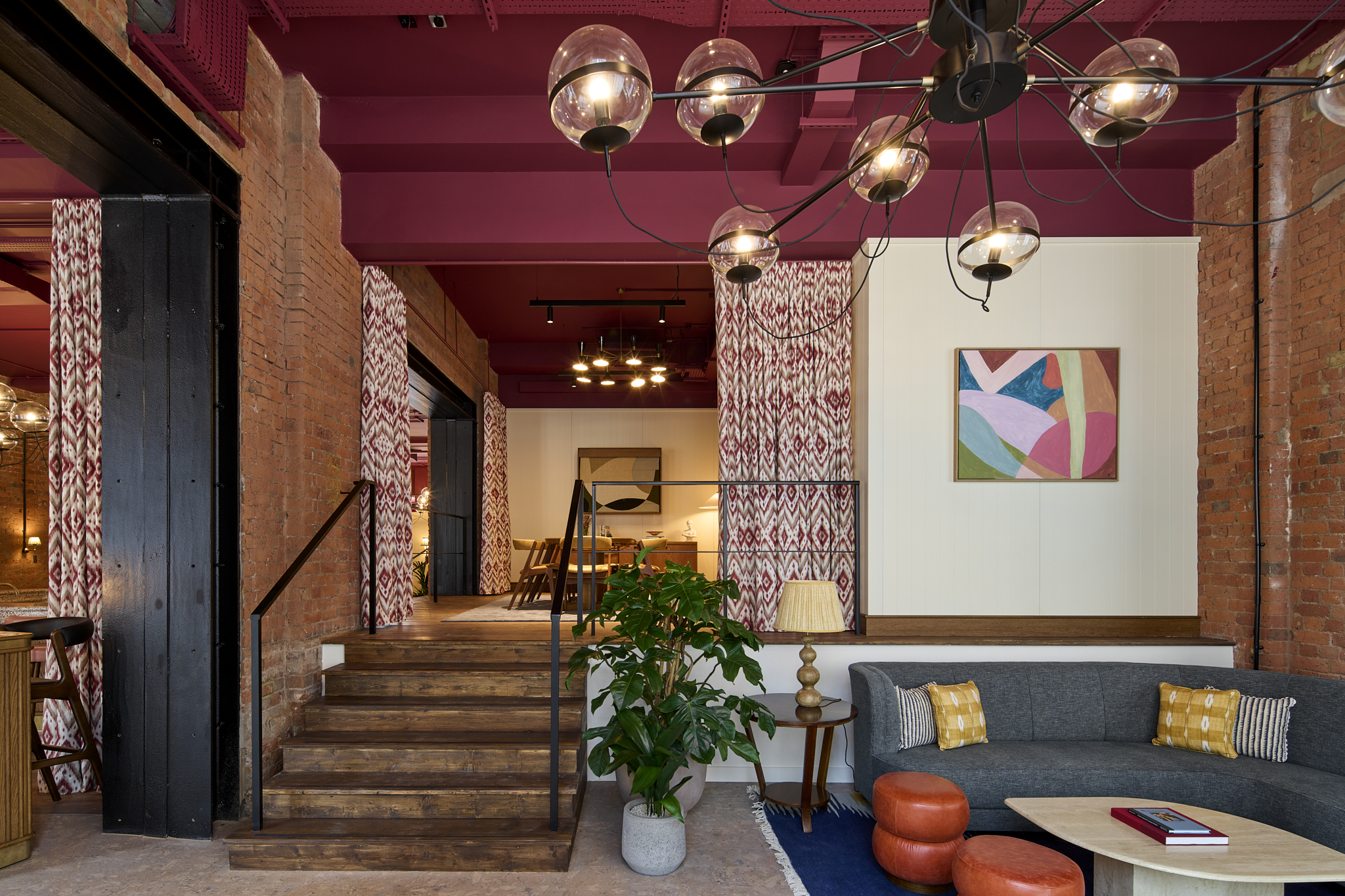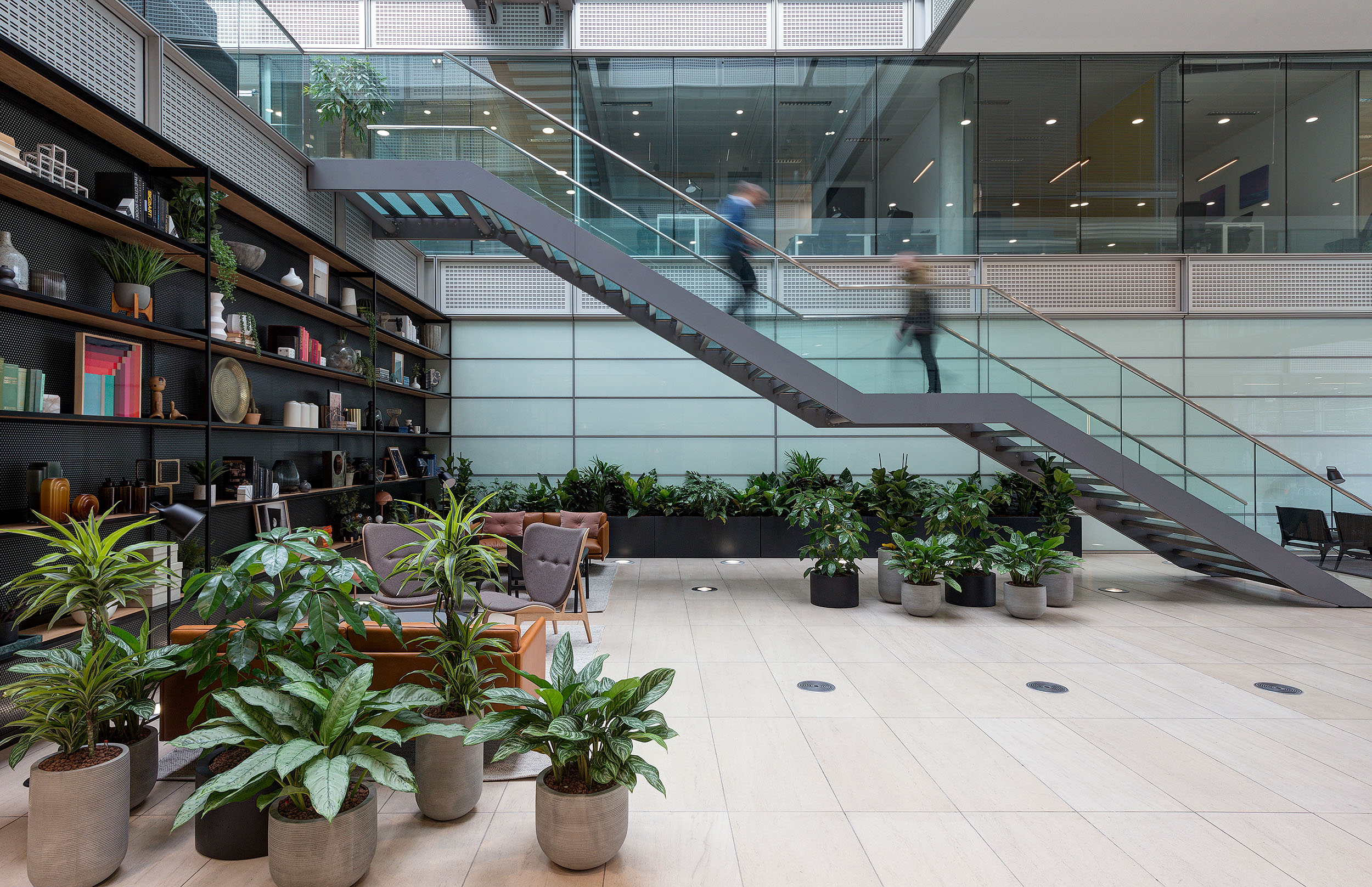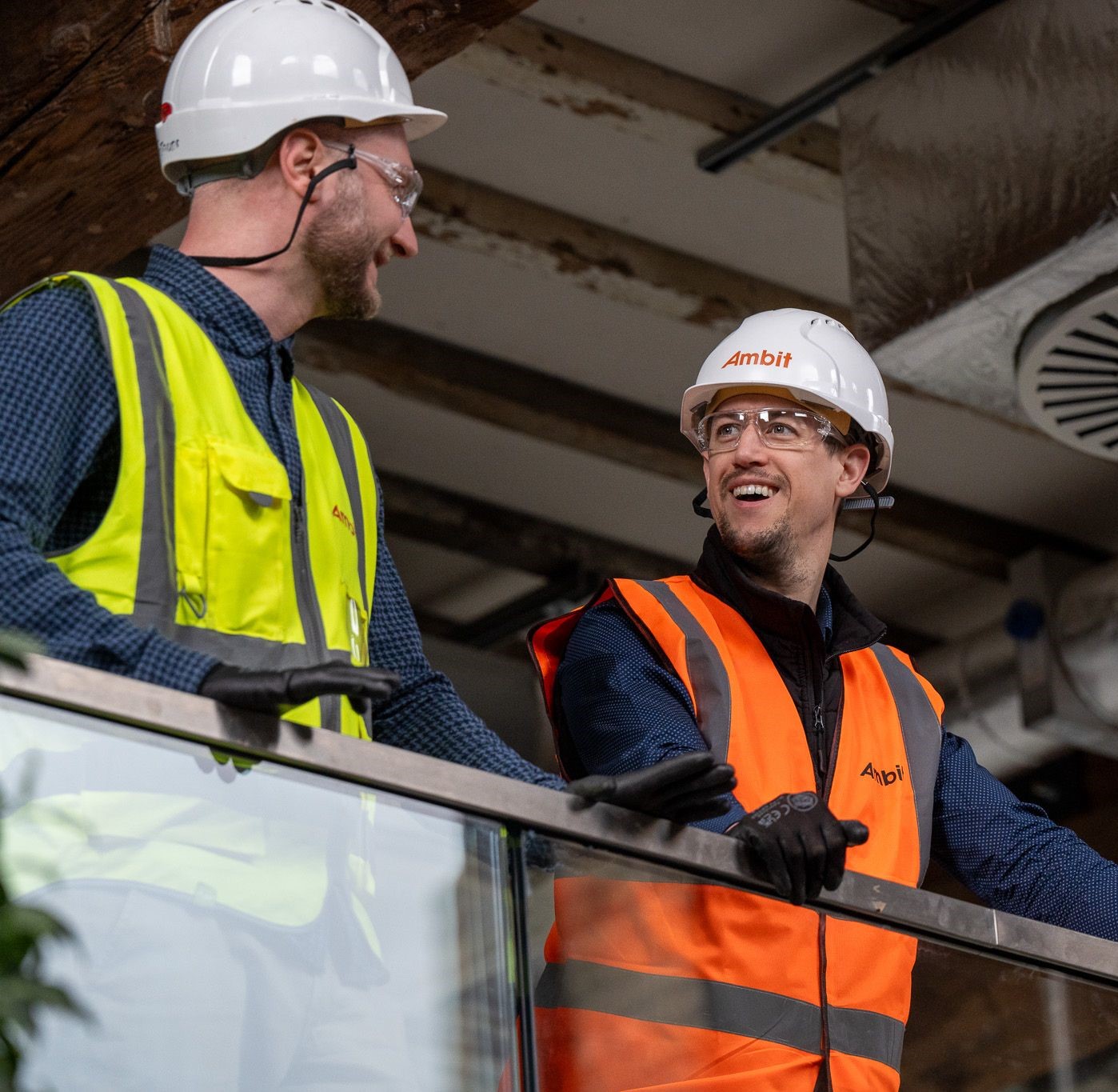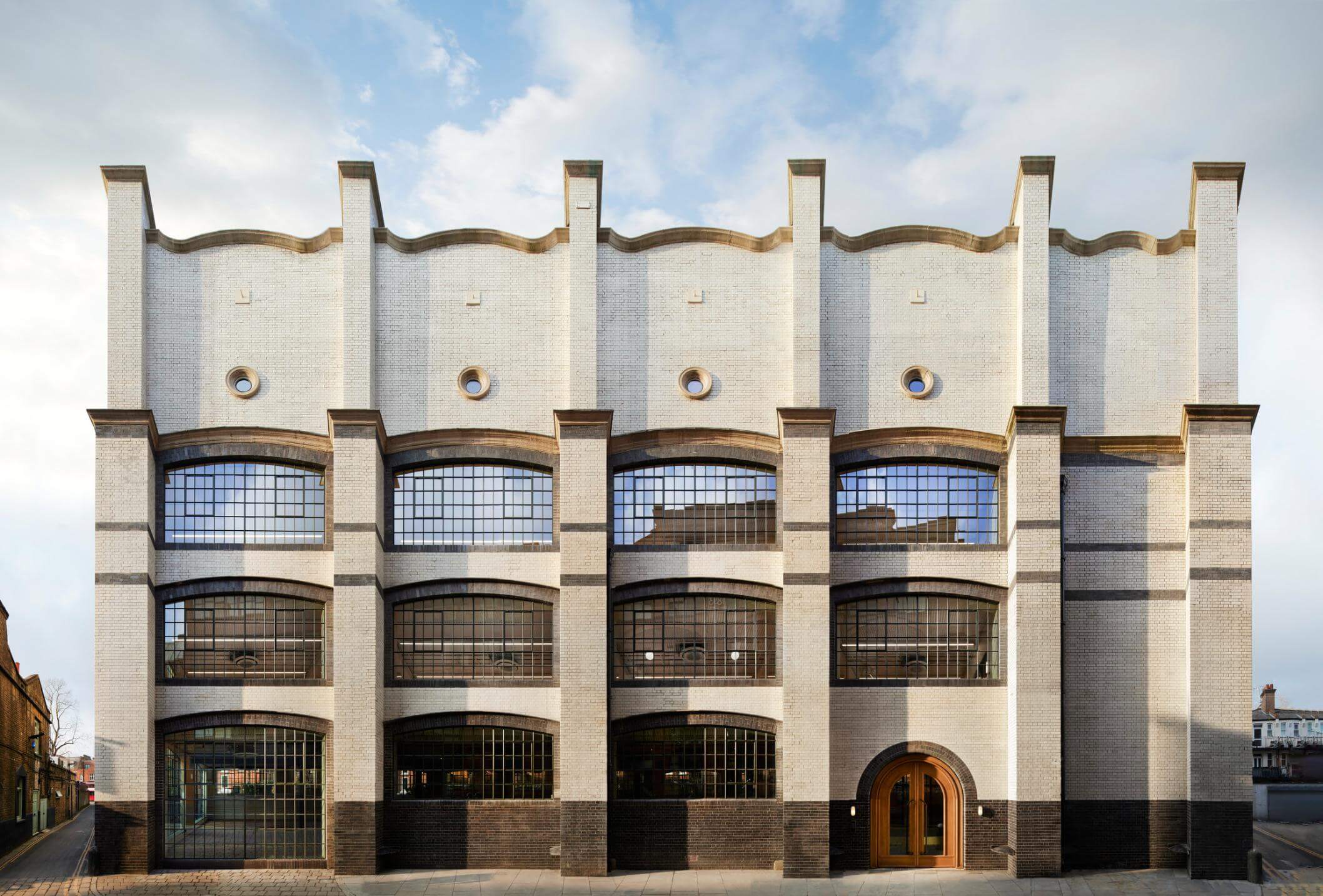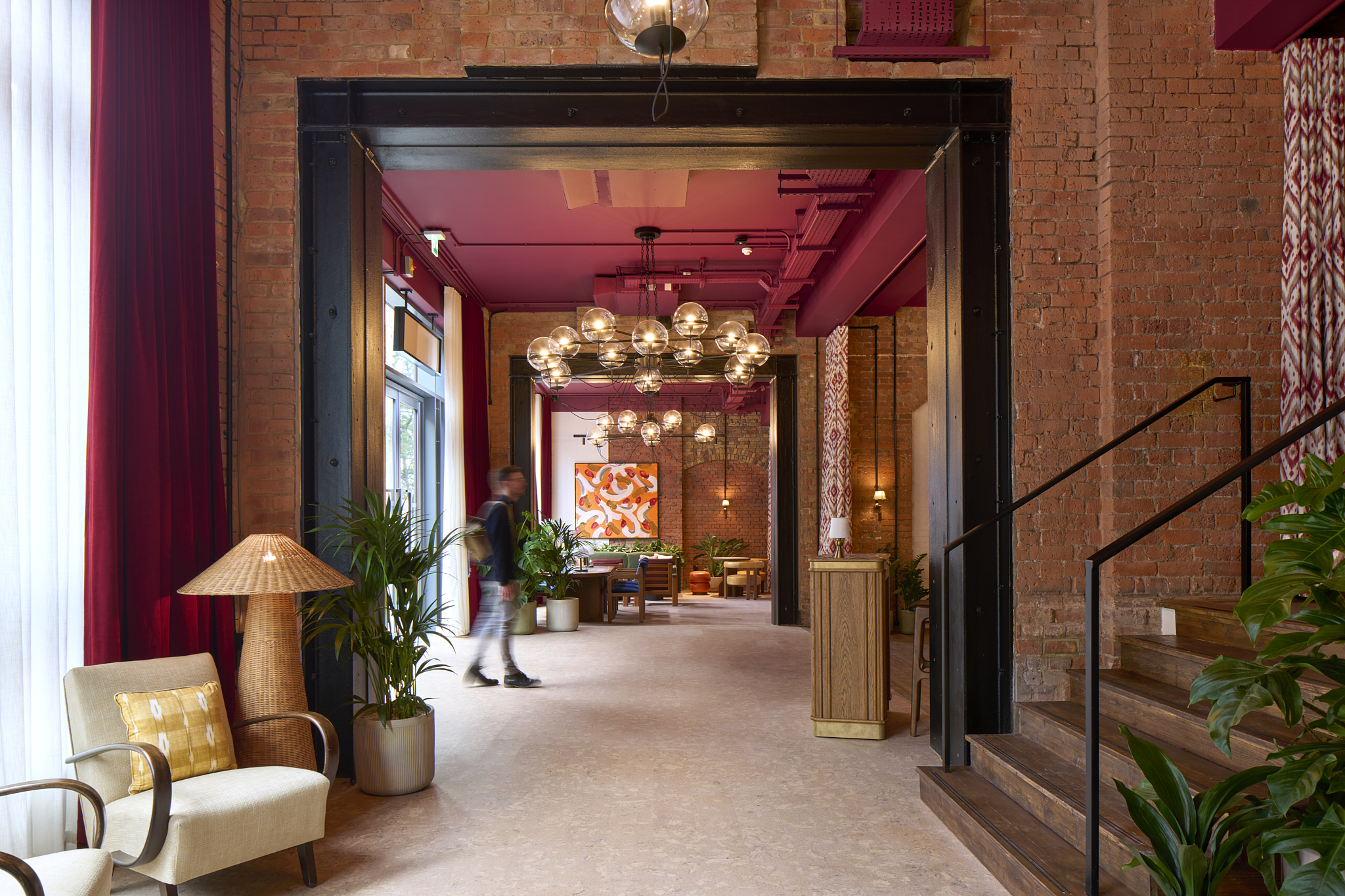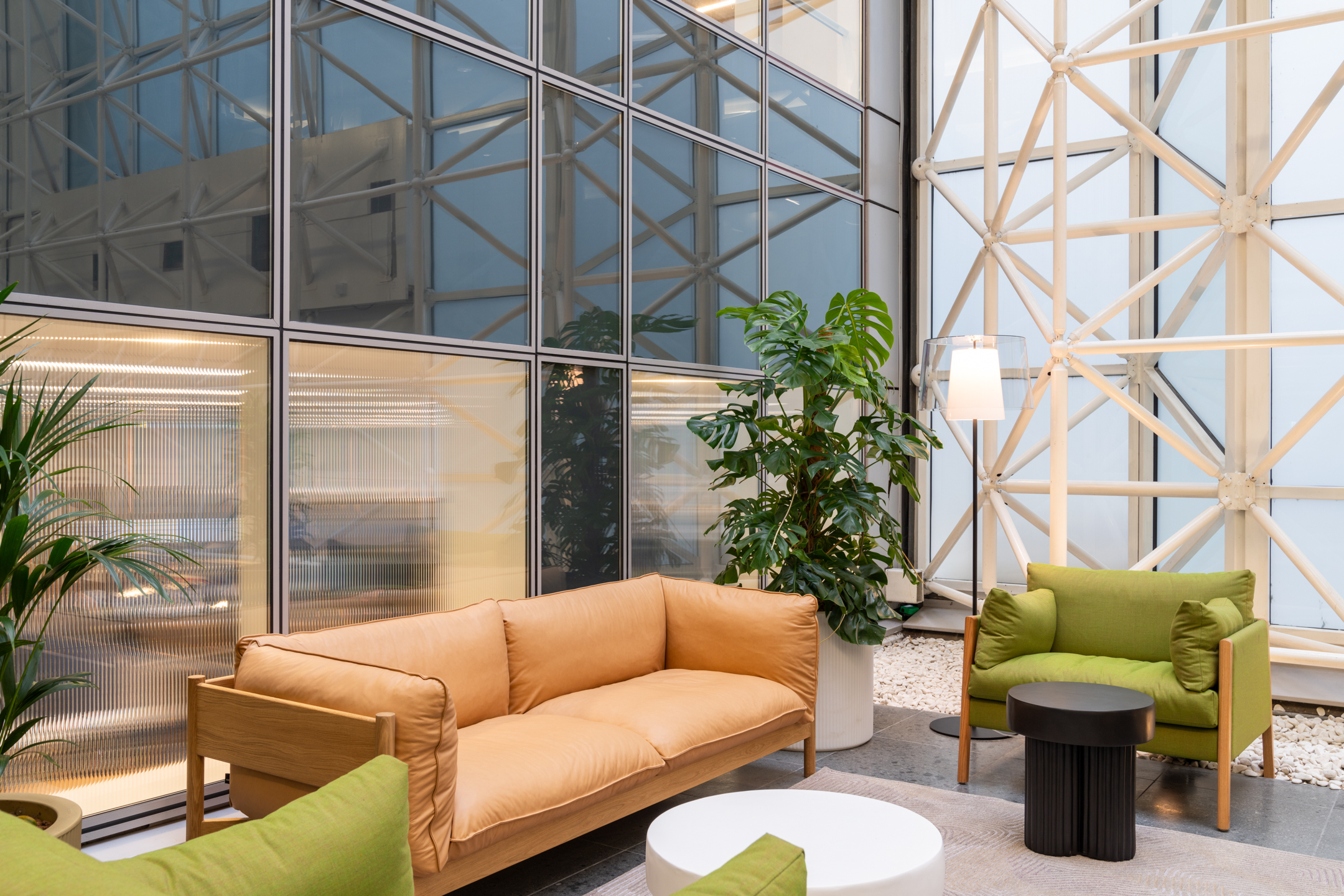Wellbeing in Design
Imagine entering a space that instantly calms your nerves, boosts your mood, and energises your mind. What if your workspace could help manage stress and enhance physical health? This isn’t just wishful thinking—it’s the power of integrating well-being into workplace design.
Together with our Head of Design, Kayleigh Nobbs, we explore the impact of thoughtful design on wellbeing, discussing how it transforms our everyday environments and the key elements to consider in designing for enhanced wellbeing.
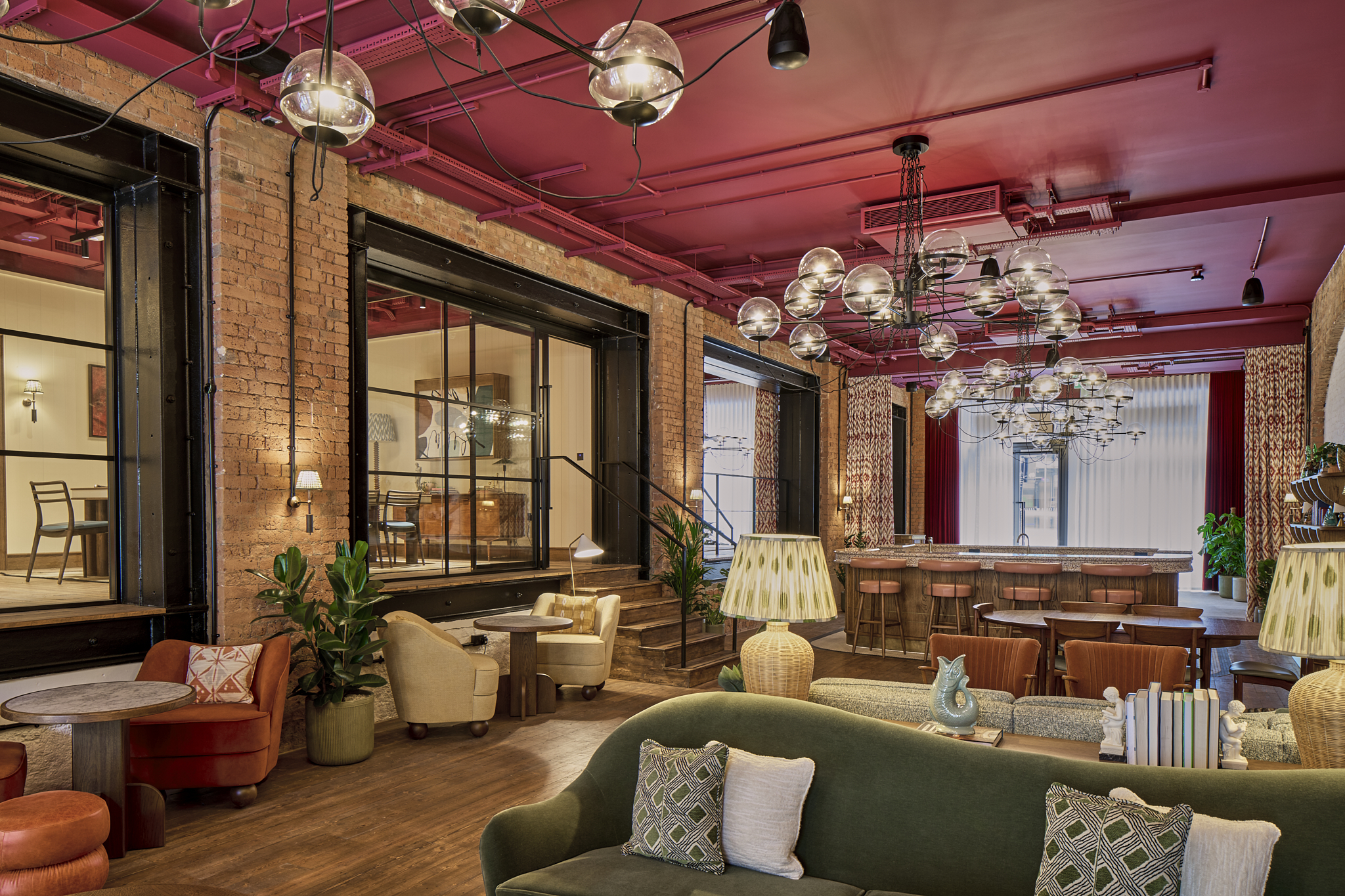
Designing beyond Aesthetics
Design is more than just aesthetics, it’s about creating environments that resonate with our physical and emotional needs. At the heart of designing for wellbeing lies principles such as ergonomics for comfort, aesthetics for pleasure, functionality for ease, and sustainability for future wellness. These principles bridge the gap between visually appealing design and physical health benefits.
Enhancing Physical Health Through Design
Ergonomic Furniture: Comfort in our physical space minimises strain and enhances long-term health. Ergonomically designed features in office chairs, kitchen setups, and adjustable desks are essential for preventing chronic pain and improving overall wellbeing.
Accessibility for All: Inclusive design ensures that everyone enjoys access to environments. Adjustments like altering the height of surfaces, widening doorways, or optimising interaction points can significantly improve accessibility.
Promoting Movement:
Designing workspaces that encourage movement can have a positive impact on the health and well-being of employees. One effective method to achieve this is incorporating staircases in the design, also known as active design. This approach aims to promote physical activity by integrating it into everyday routines. Another way to encourage physical activity is by installing a gaming area with a tennis or pool table in the breakout area.
Improving Air Quality for Better Health and Productivity:
Research from the Harvard School of Public Health reveals that poor ventilation negatively impacts productivity by reducing focus, slowing response times, and compromising physical health. Upgrading to advanced ventilation systems and incorporating natural air purifiers like plants can improve air quality, enhancing health and workplace efficiency.
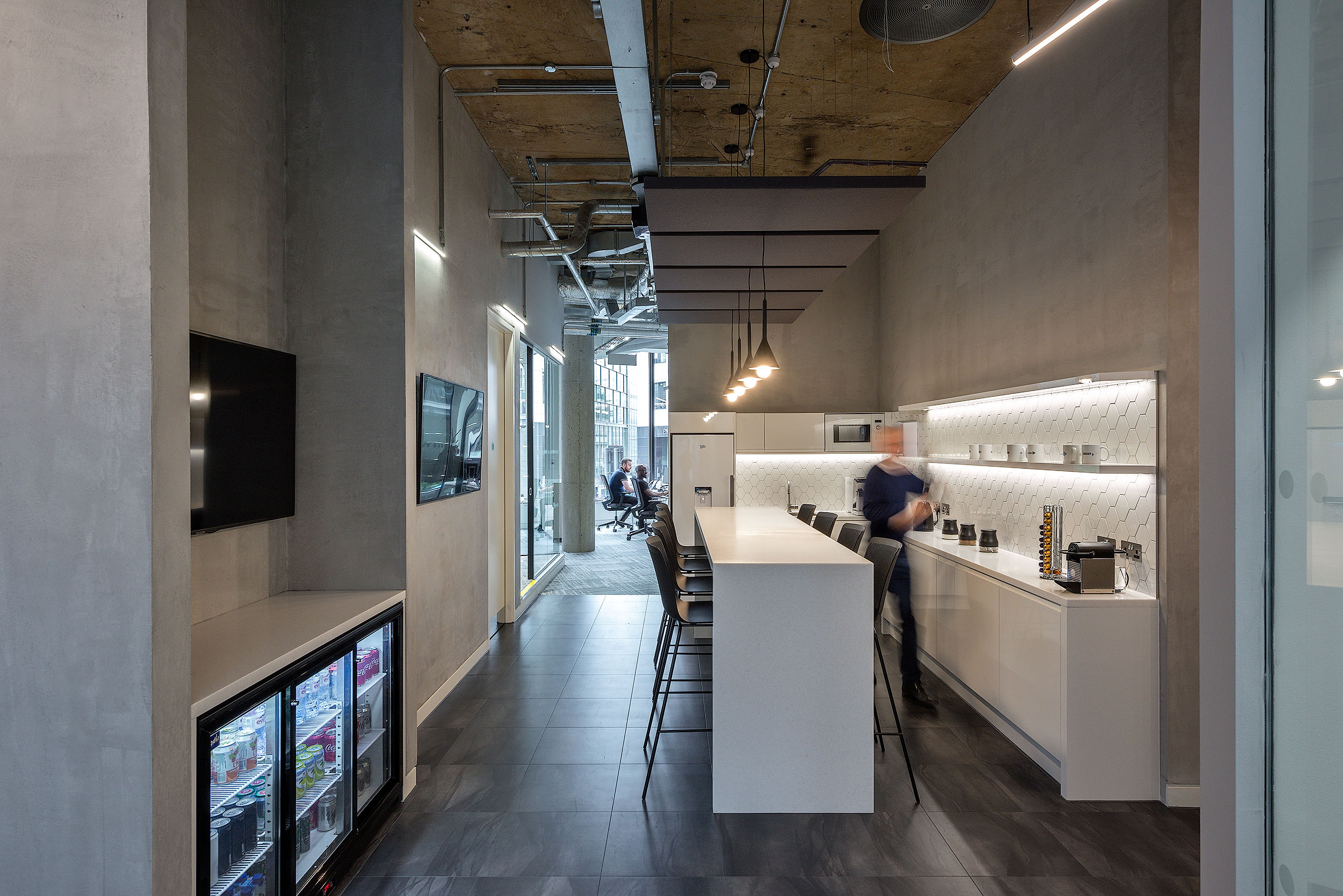
Promoting Mental Health Through Design
Natural elements: Biophilic design incorporates natural lighting, plant life, and nature-mimicking materials to reduce stress and enhance productivity significantly.
Colour Psychology: Strategic use of colours can influence mood and mental state. For instance, blue can evoke feelings of calm, while yellow might inspire creativity.
Zoning for Diverse Needs: Designing workspaces with different sensory requirements in mind can improve workplace wellbeing. Quieter acoustically tuned zones can provide tranquillity and help those requiring concentration or relaxation. Integrating mixed-use spaces and busier areas can cater to various interaction levels and activities, ensuring that individuals can find an environment that suits their sensory preferences and work needs.
Committing to Sustainable and Ethical Design
Material Choices: Opting for sustainable materials such as reclaimed wood and recycled glass enhances the aesthetic appeal of your workspace and has a minimal impact on the planet, ensuring that our design choices contribute positively to ecological sustainability as they preserve natural resources and reduce waste.
Longevity and Adaptability: Designing spaces and products that evolve with our changing needs helps minimise waste and extends the lifetime value of designs. This could involve repurposing existing furniture to fit new aesthetics and functionalities.
Ethical Production: Ethical design emphasises environmentally sustainable practices, social responsibility, and transparency in manufacturing processes to ensure fair labour conditions, utilise sustainable materials, and minimise environmental impact, with a commitment to positively impacting local communities.
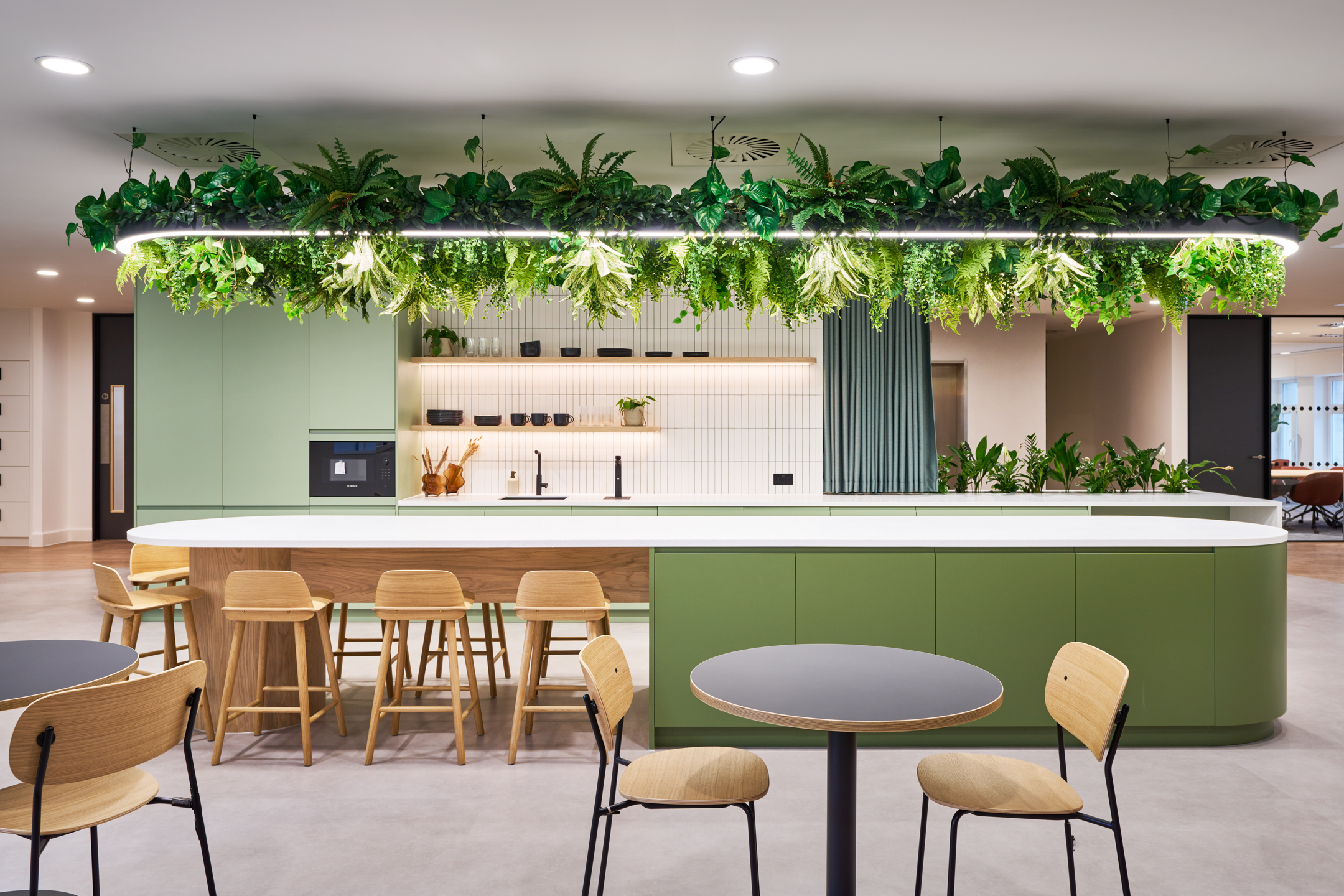
Technological Innovations in Wellbeing
The 2023 Future of Jobs Report by the World Economic Forum underscores the transformative impact of technology on workplaces. By integrating smarter ergonomic tools, personalised work environments, and advanced systems for air quality and lighting, technology is set to revolutionise how we create efficient and health-oriented spaces, catering to the dynamic needs of modern professionals.
Modern technology plays a crucial role in improving wellbeing through design. Automated systems like control lighting, temperature, and air quality make spaces more comfortable and healthier. Smart furniture that adapts to the user’s body and activity level can prevent physical strain and enhance productivity.
Well-being in design transcends mere trends—it represents a movement dedicated to crafting healthier and more enjoyable lives through thoughtfully designed environments. By adopting these fundamental principles, we can transform ordinary spaces into sanctuaries of health and happiness.
Discover how we are reshaping workspaces to prioritise well-being, productivity, and sustainability in our project 7 Bishopsgate Level 4.

